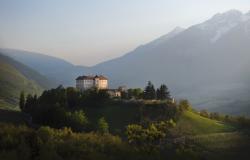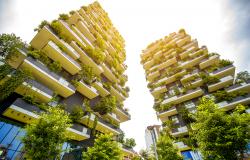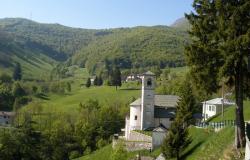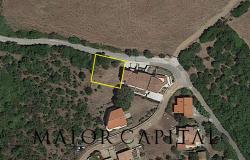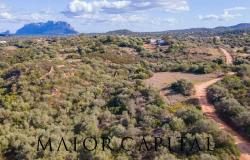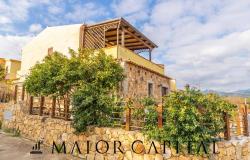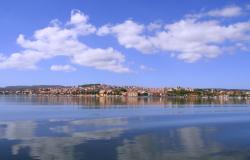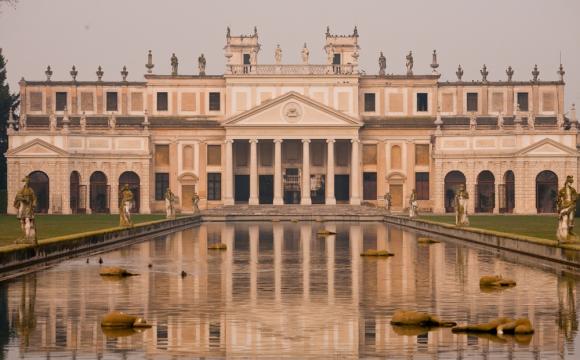But then I was comparing the long pale grey expanse of Poetto to the sun-flooded isthmus of Punta Is Molentis, where a narrow strip of candid sand is lapped by sapphire waters on one side and pale turquoise ones on the other—while he had in mind a small, pebble-infested cove of Northern Italy, where the sea often turns a murky shade of dark green.
Exasperated by my lack of enthusiasm for Poetto, my husband asked me: “So what is a great beach in your books?”
Well, it took me some ten years to answer his question, but here’s my top five list drawn from the area I know best, Southern Sardinia.
Punta Is Molentis, Villasimius
 A thousand nuances of blue dance under the sun, bathing the pure white sand at the foot of a giant myrtle-scented hill. On one side, a cerulean sea washes over a sheltered, velvet soft beach. On the other, granite rocks crop up from dark blue waters. Curiously, the beach is named after the donkeys (molentis in Sardinian) which were used to haul granite from the local quarries. This is a wild place, so expect water, sun, sand, sparkling rocks and little else.
A thousand nuances of blue dance under the sun, bathing the pure white sand at the foot of a giant myrtle-scented hill. On one side, a cerulean sea washes over a sheltered, velvet soft beach. On the other, granite rocks crop up from dark blue waters. Curiously, the beach is named after the donkeys (molentis in Sardinian) which were used to haul granite from the local quarries. This is a wild place, so expect water, sun, sand, sparkling rocks and little else.
Mare Morto, Tharros
 The waters stretch peaceful and crystalline against a soft white sand at Mare Morto, a beach just off the village of Cabras which, despite its name (dead sea), is very much alive with molluscs and healthy clumps of Poseidonia seaweed. What catches the eye here are the golden ruins of a Carthaginean and Roman town, Tharros, which are scattered on the hill above the beach. For sheer natural beauty, the startling white quartz beaches of nearby Is Arutas and Mari Ermi are perhaps a better bet, but the charm of swimming at the foot of two thousand years old relics is hard to beat.
The waters stretch peaceful and crystalline against a soft white sand at Mare Morto, a beach just off the village of Cabras which, despite its name (dead sea), is very much alive with molluscs and healthy clumps of Poseidonia seaweed. What catches the eye here are the golden ruins of a Carthaginean and Roman town, Tharros, which are scattered on the hill above the beach. For sheer natural beauty, the startling white quartz beaches of nearby Is Arutas and Mari Ermi are perhaps a better bet, but the charm of swimming at the foot of two thousand years old relics is hard to beat.
Su Giudeu, Chia
 High dunes of pale golden sand, crowned by tufts of juniper, gently slope down into a sea of molten turquoise, emerald and sapphire. Oppoite the beach, a rocky, bush-encrusted islet is a splash of earthy brown in the expanse of blue. The waters around the islet shelter fish and octopus. lthough the landscape is pristine, the beach is tame—meaning that it has anything from deckchairs to paddle boats for rent. For this reason, and because it is managed in a sustainable way, the comune of Domus de Maria, which encompasses Su Giudeu and the surrounding beaches of Sa Colonia, Cala Cipolla and a few others, is one of only twelve comuni to be granted five out of five sails in the Legambiente/Touring Club Italiano Blue Guide to Italian beaches.
High dunes of pale golden sand, crowned by tufts of juniper, gently slope down into a sea of molten turquoise, emerald and sapphire. Oppoite the beach, a rocky, bush-encrusted islet is a splash of earthy brown in the expanse of blue. The waters around the islet shelter fish and octopus. lthough the landscape is pristine, the beach is tame—meaning that it has anything from deckchairs to paddle boats for rent. For this reason, and because it is managed in a sustainable way, the comune of Domus de Maria, which encompasses Su Giudeu and the surrounding beaches of Sa Colonia, Cala Cipolla and a few others, is one of only twelve comuni to be granted five out of five sails in the Legambiente/Touring Club Italiano Blue Guide to Italian beaches.
Tuerredda, Teulada
 Two tall promontories covered with juniper and mastic border the fine white beach at Tuerredda, near Teulada, and the rocks that pepper the waters many metres below are clearly visible from the top of either headland. The sea—a triumph of aqua, azure, cobalt and ultramarine hues—is that transparent. Opposite the shore, a small islet is home to seagulls and sailing boats in equal numbers.
Two tall promontories covered with juniper and mastic border the fine white beach at Tuerredda, near Teulada, and the rocks that pepper the waters many metres below are clearly visible from the top of either headland. The sea—a triumph of aqua, azure, cobalt and ultramarine hues—is that transparent. Opposite the shore, a small islet is home to seagulls and sailing boats in equal numbers.
Cala Domestica, Buggerru
 Two limestone cliffs loom large over a long, narrow bay topped by a wide stretch of soft golden sand. It is Cala Domestica, a secluded beach where an emerald sea laps the shore under the watchful eye of an old Spanish tower. Stone ruins dot the dunes, mementoes of when the area was a thriving mining centre. And the rocks on one side of the bay hide a secret—a passageway carved by miners, which leads from the main beach to an even smaller and, if possible, prettier cove, La Caletta. Further down along the coastline, another small, pretty beach, Masua, is the best place to take in the views of the Pan di Zucchero, a rocky outcrop rising sharply from the sea.
Two limestone cliffs loom large over a long, narrow bay topped by a wide stretch of soft golden sand. It is Cala Domestica, a secluded beach where an emerald sea laps the shore under the watchful eye of an old Spanish tower. Stone ruins dot the dunes, mementoes of when the area was a thriving mining centre. And the rocks on one side of the bay hide a secret—a passageway carved by miners, which leads from the main beach to an even smaller and, if possible, prettier cove, La Caletta. Further down along the coastline, another small, pretty beach, Masua, is the best place to take in the views of the Pan di Zucchero, a rocky outcrop rising sharply from the sea.
These five are a must for any self-respecting beachcomber, but of course Italy has many more great places—Cala Luna and Cala Mariolu in north-eastern Sardinia spring to mind, as do, for sheer exoticism, the pitch black beaches near Catania.

